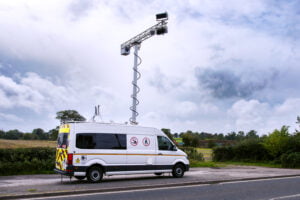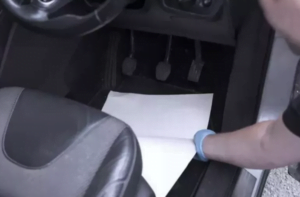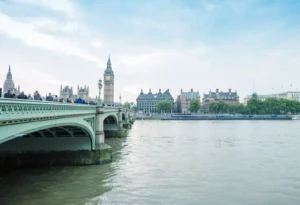On the back of the Government’s decision last year to let councils outside London and Cardiff apply for powers to enforce moving traffic offences, some 27 local authorities have put forward proposals to enforce 111 yellow box junctions, a new report from the RAC reveals.
After commissioning chartered engineer Sam Wright, who was formally responsible for the design and approval of yellow boxes on the Transport for London road network, to review the applications the RAC believes there are issues with 90% of the boxes which are likely to lead to drivers being fined unfairly.
In fact, more than half (61, or 55%) directly contravene the current government guidance, sometimes on multiple counts. The junction breaches include:
- 40 that pose visibility issues for drivers
- 16 that are on the side of the road opposite T-junctions which the Department for Transport (DfT) states serves ‘no useful purpose’
- 18 that extend beyond junctions such that they may be considered non-complaint with the regulations
- 9 that are in non-permitted locations according to the regulations.
Last year the RAC asked Sam Wright, who runs the website Yellow Box Guru, to write a report on best practice for enforcing box junctions which highlighted gaps in the DfT’s guidance and a general lack of knowledge and understanding that could lead to many unfair fines being issued.
The purpose of yellow boxes is to prevent the blocking of ‘cross’ or ‘through’ traffic movements. If a box, or part of a box, does not protect a cross movement, it serves no purpose and any fine issued there is unnecessary.
Two of the biggest issues with many of the yellow box junctions that councils are looking to enforce relate to visibility and size – something that’s covered by the official guidance and has been reiterated by the previous Chief Adjudicator of the Traffic Penalty Tribunal. Drivers need clear visibility of the box, and where it ends, in order to comply with their duty to only enter it if their exit is clear. If visibility is unclear, then fines are unfair. Unfortunately, consultations have shown that many of the boxes proposed to be enforced do not conform with this requirement because visibility is blocked, boxes are too large for drivers to see where they end, or they simply do not cover cross movements.
The report’s findings show 90 (81%) of the boxes proposed for enforcement are unnecessarily large and 40 boxes (36%) have visibility issues. In some cases, drivers can’t even see there is a box present because of faded road markings, let alone where it ends.
Sam Wright said: “Visibility issues are connected to the road layout, topography, buildings, box length, street furniture, trees, or a combination of these. While many boxes are barely visible at the moment due to a lack of maintenance, I chose to ignore this on the assumption that lines will be refreshed prior to enforcement. Crucially, I haven’t seen a single proposal that reviews the visibility of the box from a driver’s point of view. If you also factor in bad weather, poor light and other vehicles, then the poor visibility situation is exacerbated. This is all very concerning, especially as enforcement is carried out via cameras high in the air.”
The RAC review also found councils are planning to enforce 16 boxes at the far side of T-junctions, something which goes against the DfT guidance which states: ‘A half‐box on the side of the road opposite a T‐junction generally serves no useful purpose’.
There are also 18 boxes that extend beyond junctions such that they may be considered non-compliant with the regulations, based on previous rulings by adjudicators in London. While they definitely serve no purpose, whether or not they are a breach of the regulations is not clear because the DfT does not specify exactly where junctions start and end.
Nine junctions proposed for enforcement are in locations that are not stipulated in the Traffic Signs Regulations and General Directions (2016). These include boxes at roundabouts and gyratories without traffic lights and outside a private car park. Hertfordshire initially proposed to enforce a junction outside a private car park but dropped the idea after launching its consultation.
Sam Wright added: “Many of the boxes have been around for years, perhaps decades. It appears that many authorities have simply assumed that the boxes already on the ground are suitable for enforcement without carrying out a fresh assessment as is recommended in government guidance.
“There are many changes needed to improve yellow box law and enforcement. However, as a minimum it is not unreasonable to expect that authorities should undertake comprehensive audits of boxes prior to enforcement to assess all issues.
“Unfortunately, there is no evidence in any of the consultations that such audits have been carried out. This means action is needed by the Department for Transport to both review existing guidance and compel mandatory audits prior to enforcement. We believe this will help to ensure transparency and fairness in enforcement.”
RAC roads spokesperson Simon Williams said: “Unfortunately, it seems many of the concerns we highlighted a year ago have started to become a reality. The issue of box size is not adequately addressed in the Government’s guidance which means many drivers will end up being unfairly fined.
“Fining people can have real financial consequences for those on the receiving end. Enforcing yellow boxes means that the driver of a vehicle overhanging a box by any amount for just a moment can get a ticket. Yet many drivers end up stopped or trapped in these junctions through no fault of their own. It is not only imperative, but a moral duty to ensure that fines are fair, justified and that the appeals’ process is consistent across the country.
“And in some cases, we believe enforcement may end up actually increasing congestion as a result of drivers hesitating before moving on for fear of being fined. This is the exact opposite of the justification for enforcement being undertaken.
“We urge the Government to carry out an urgent review of its yellow box junction guidance and clarify what is and isn’t enforceable. It’s vital that size and visibility issues are resolved once and for all. Councils should then be ordered to carry out audits of all the junctions they propose to enforce, including from the driver’s perspective. And, if adjudicators find councils have wrongly enforced junctions, they must be obliged to refund any fines issued and correct the junctions in question.”





















